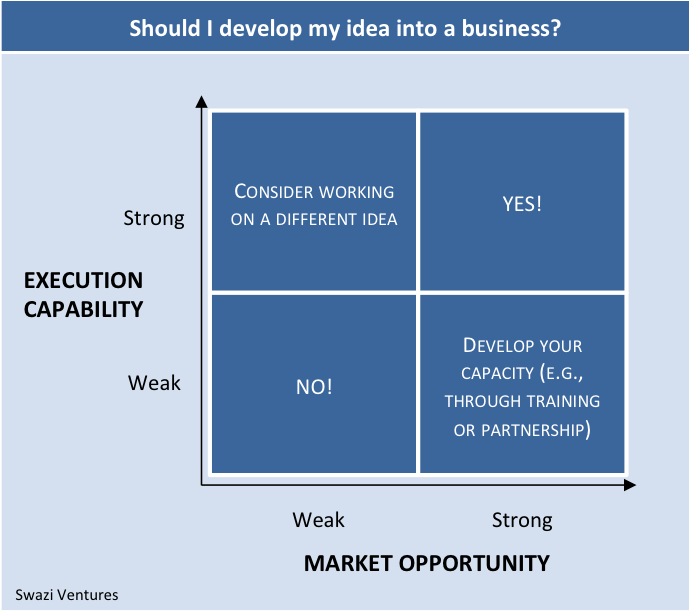In our last article, we discussed two critical questions that an aspiring entrepreneur must answer: (1) Do I have a compelling solution to a large, growing need; (2) Can I deliver this solution better than most people? If you have a weak idea, go back to the drawing board and imagine another or refine it. If you have a strong idea but weak capability, consider whether you can develop or source these capabilities before developing the idea. If you have a strong idea and strong capability, push on for this is a time to build.

Building a new product, a process known as product development, involves three main steps:
- Concept validation: Does the market really want the product I am just about to develop? Talk to potential users of your product about the pain points they are facing that create a need for your product. This is a crucial time to develop a concrete sense of the solution specifications – what users' expectations and demands are. If the product you want to develop is tomatoes for high-end retail, go and talk to some high-end retailers and ask them what kind of tomato they want: is it organic; what is its desired shelf life; does it have tough or soft skin; is it a special variety? Whatever the product is, find out what features your users would want to it to have. Now play it back to them: if I developed a product with these features, would you be willing to buy it, for how much? Proper concept validation guarantees a market for your product.
- Prototyping: Prototyping is developing a physical materialization of the product idea. During this stage, it is crucial to obtain feedback, so that the product you are developing remains true to the market need. First, develop a simple mock-up of the idea and get feedback from potential users. Next, develop the simplest functional version of the product that meets the user specifications identified during concept validation. This version of the prototype is known as a Minimum Viable Product (MVP). Take the MVP to your potential users and ask them if it what they would pay for and how it can be improved. Iterate on the prototype by incorporating this initial user feedback. Prototyping is a highly iterative process that involves lots of tweaking and feedback. The closer the final product resembles the needs and expectations of the market, the more likely that the product will be commercially successful.
- Launch: Now that you have a nice product that has an expectant market, you are ready to launch. This is where you develop a business model that answers the question: how do I get money out of this? What price point do I sell at? Do I charge per unit or do I offer a subscription service? Do I sell in bulk to a distributer or do I sell directly to the end consumer? What is my marketing plan; how will I communicate my product’s value proposition to users? What is the right time to launch the product? All these are questions about what is known as a go-to-market strategy.
By the time you are developing a go-to-market strategy, you are ready to start thinking about potential external funding to help you mass produce and take the product to your customers. Until then, keep busy converting your wits into a concrete product that is fundable. After all, entrepreneurship is not a creativity contest that merely rewards imagination; it is the ability to provide a superior solution to a specific challenge in a resource-constrained environment. Start building.
